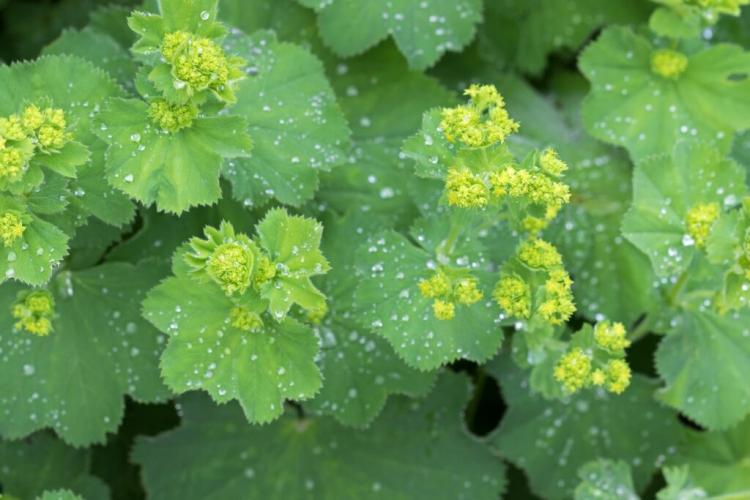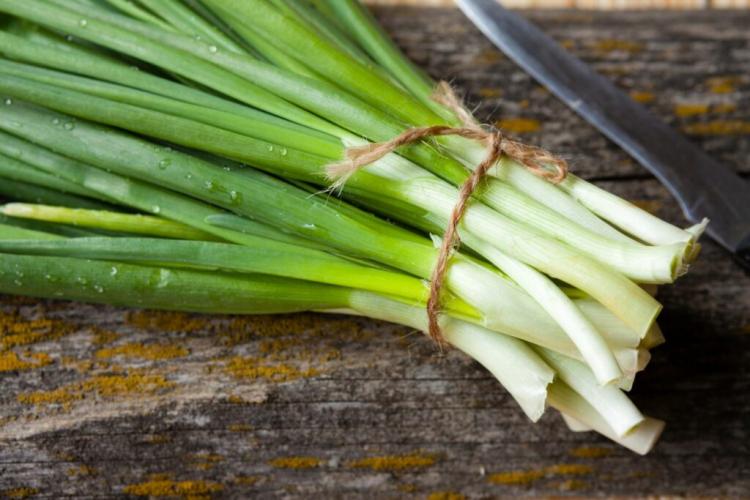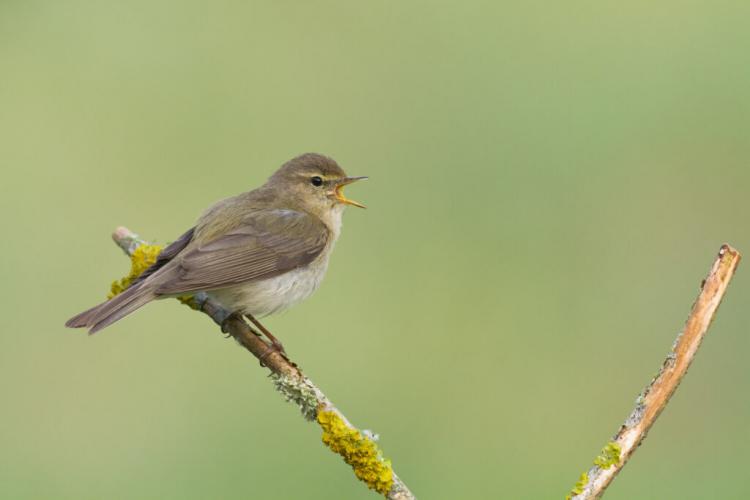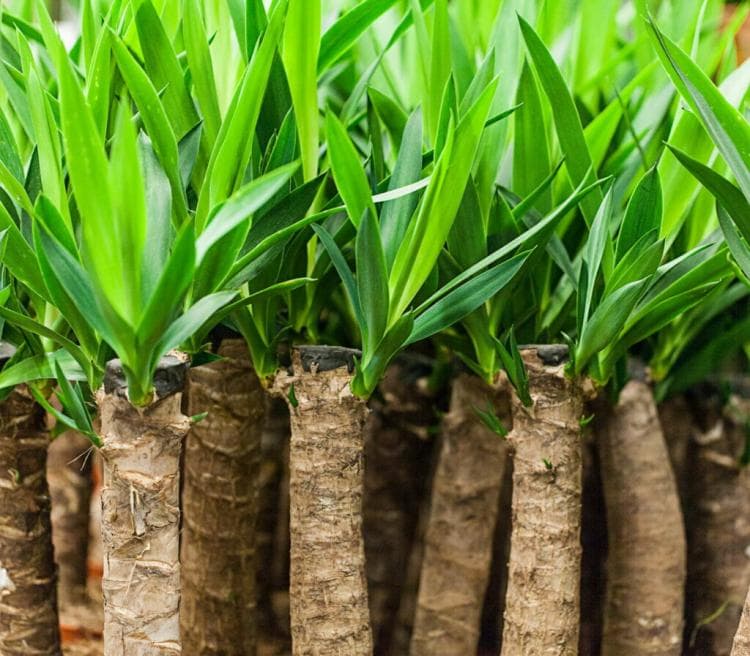Lawn after winter: first mowing, fertilizing & scarifying
When the lawn wakes up from hibernation, maintenance begins again. But when and how do you fertilize and mow the lawn for the first time after winter?
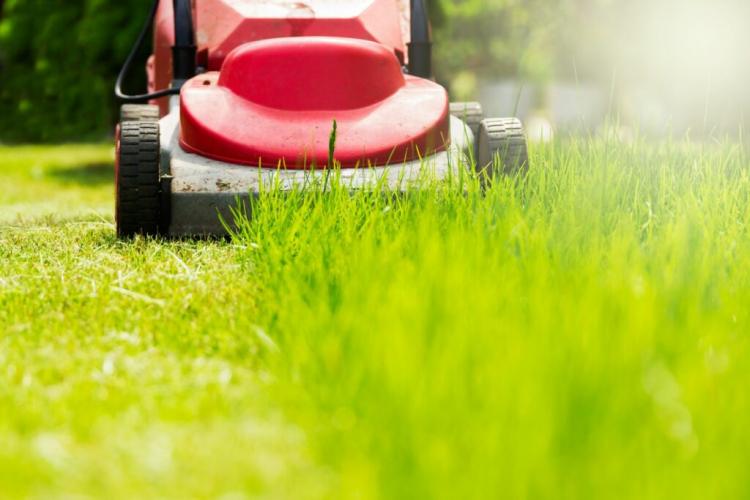
After the winter, lawn care starts again [Photo: Gabe Smith / Shutterstock.com]
The lawn – the favorite and most cared for area in many German gardens. A green, dense and healthy lawn is a status symbol in many places and distinguishes its keeper as the owner of a particularly green thumb. Good lawn care after winter should therefore give your home lawn the best starting conditions for the coming year. With this article we will help you make decisions about when to mow for the first time, the correct cutting height after winter and the first fertilization. We also explain why spring is also the best time to scarify.
Mow the lawn after winter
Table of Contents
When the warming rays of the sun push the soil temperatures above 8 ° C, the lawn begins to grow again. But only when the growth has fully set in should you bring your mower back from the sinking of winter.
When is the first time to mow the lawn after winter?
Depending on the type of soil under your lawn, it will begin to grow earlier or later in the year. The first cut can only be made when it has reached almost twice the height of its desired cutting height. This time is usually around April, but is strongly influenced by the weather. A first mowing too early can literally catch the lawn, which is now drifting from the base, cold. The light green leaf tips are not yet sufficiently hardened and would be damaged by frost if late frosts should occur.
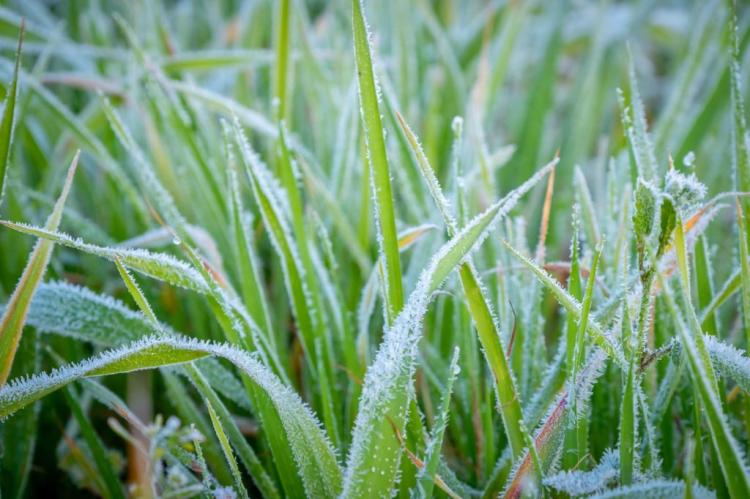
The young stalks of the grass plants are less hardened and can hardly withstand late frosts [Photo: Galyshko8024 / Shutterstock.com]
But how does the type of soil affect the point in time when your lawn starts to grow? The soil temperature rises at different rates in different soil types in spring. A light soil – a soil with a high proportion of sand and a low proportion of clay – contains many large pores that are usually filled with air. The air in the pores can be heated relatively quickly if a heat source such as the sun is at work. The situation is different with a heavy soil – i.e. a soil that has a high proportion of clay or loam. This contains more small pores in which the water stubbornly holds like a sponge. Water can be heated much more slowly than air and thus a damp or even wet soil stays cold longer in spring.
For the knowledge-thirsty reader: The fact that air can be heated up quickly and water heats up more slowly is due to the fact that water and air differ in their so-called “heat capacity”. The heat capacity of a substance indicates how much energy must be supplied to a defined volume before it increases its temperature by 1 ° C. This unit is given in joules / cm3. You may know the joule from the nutrition information on the back of food – it is the unit of energy. The fact is that the heat capacity of water is much higher than that of air. It would take around 1300 joules of energy to heat 1000 liters of dry air by 1 ° C – this corresponds to around a thousandth of a bar of milk chocolate. After all, to heat 1000 l of water you needed the energy of two bars of milk chocolate. This example is not intended to make it clear that we should eat less chocolate, but that water absorbs large amounts of energy without changing its temperature much.
Summary: When is the first time to mow the lawn after winter?
- The first mowing should only take place when the lawn has reached almost twice the height of its desired height.
- This point in time usually occurs around April, in some circumstances earlier on light soils than on heavy soils – also depending on the weather.
- Mowing too early for the first time can lead to frost damage to the young leaves during late frosts.
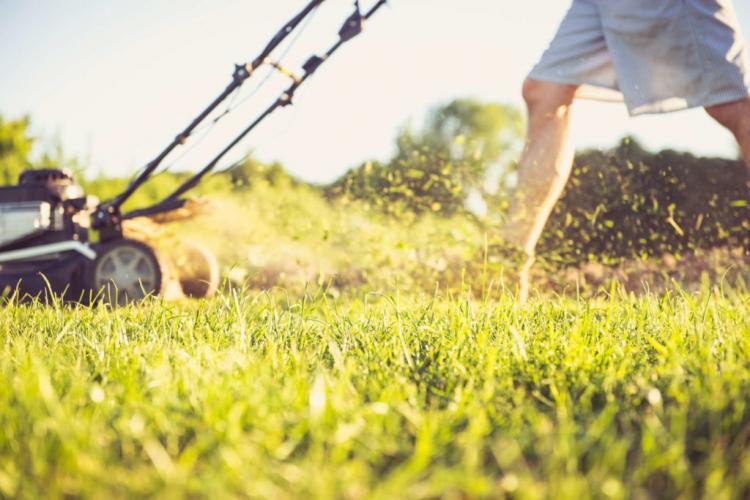
The first mowing usually takes place in April [Photo: StockWithMe / Shutterstock.com]
By the way: While the grass plants above ground only begin to stir properly from a soil temperature of around 8 ° C, the roots grow at a lower soil temperature of 3 to 5 ° C.
How deep to mow the lawn after winter?
Depending on the type of lawn, the recommended cutting heights differ by several centimeters. After winter, the lawn may initially remain 1 to 2 cm longer. Strictly adhere to the rule that never more than half – rather only a third – of the stalk should be removed in one cut. Otherwise the suddenly very short lawn is threatened with sunburn. If necessary, mow in stages. From the third mowing onwards, you can mow at the usual height. The table below shows the best time to cut. Tend to choose the higher specification for the first cuts. If you have a lawn in a shady location, you should not cut it less than 5 cm in length, because the lower light supply must be compensated for with more leaf mass. In dry weather and without watering, the grass should never be shorter than 4 cm.
Your home pile is most likely a utility lawn or a hard-wearing lawn. The two types do not differ significantly in the cutting height, but they do differ in the grass composition and the frequency of cuts. A hard-wearing lawn – which, by the way, also includes sports field lawn – is mowed a little more frequently and therefore has a thicker and more tread-resistant sward.
| Lawn type | Cut at height [cm] | Target cutting height [cm] |
|---|---|---|
| Ornamental lawn | 3 – 6 | 2 – 3 |
| Utility lawn | 6 – 9 | 3 – 4.5 |
| Tough lawn | 6 – 8 | 3.5-4 |
| Extensive lawns | – | 6-10 |
Tip: Extensive lawns include public green strips and rarely used parking areas, as well as wild meadows and all other rarely and less heavily used lawns with a sward that is not very sure-footed. Such lawns are already well supplied with two to three mowings per year.
Summary: How deep to mow the lawn after winter?
- At the beginning of the growing season, leave your lawn 1 to 2 cm longer than usual.
- The correct lawn height depends on the type of lawn and is 3 to 4 cm for most lawns in private gardens.
Fertilize the lawn after winter
Fertilization can only have an optimal effect if it is applied in the right time window. The right fertilization date varies depending on the type of soil, intensity of use, type of fertilizer and weather conditions. If your lawn is yellow, brown, or muddy after winter, something may have gone wrong while preparing the lawn for winter. Perhaps this article will help you find out what you could have done better.
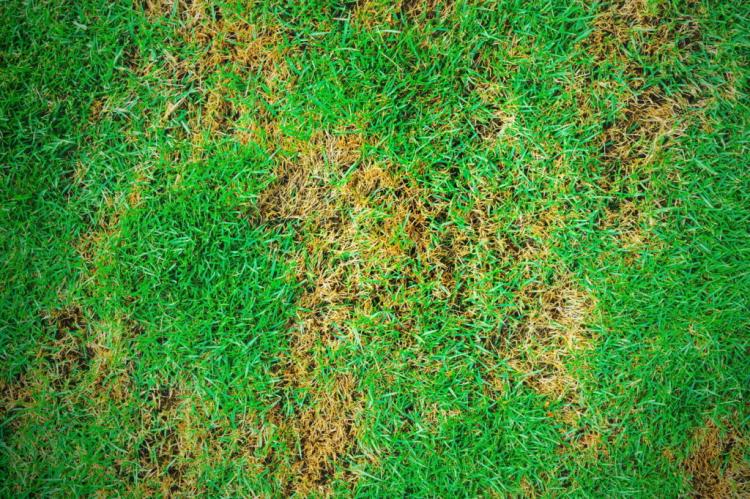
If your lawn looks like this after the winter or after the first fertilization, the reason may be fertilization in the wrong dosage or at the wrong time [Photo: SingjaiStock / Shutterstock.com]
When to fertilize the lawn after winter
The fertilization date is influenced by the type of soil that is present in that light, sandy soil is fertilized early, while rich, clayey soil is fertilized late. This can be explained as follows:
- Sandy soil is less able to store nutrients because it lacks soil particles that can bind nutrients. Humus molecules and clay minerals are the soil particles that are particularly good at doing this. However, both are rare in a light sandy soil.
- A rich, nutrient-rich soil has many of the nutrient-storing soil particles. Clay minerals and humus molecules are able to form so-called clay-humus complexes, which bind nutrients particularly effectively.
- For this reason, a lawn on light soil is fertilized as early as March or April to stimulate growth by providing readily available nutrients. A heavy soil contains the necessary nutrients for the first growth spurt from the previous autumn fertilization and therefore does not have to be fertilized until the end of May or the beginning of June, when natural growth begins to slow down. If your soil is somewhere in the middle between light and heavy soil, the natural growth spurt will also wear off sooner. You can recognize this by the fact that you have to mow less often. By making a note of this point in time, you can use it as a guide for the coming year. If scarifying, aerating and / or sanding takes place in spring, the first fertilization takes place after the last work step.
The important general fertilizer rules also apply in spring:
- Especially dose mineral fertilizers very carefully, if at all.
- Even distribution – on large areas, preferably with a fertilizer spreader – protects against “burns” or visibly unfertilized areas.
- If possible, carry out fertilization if rain is expected on the same day or is already falling; otherwise use of irrigation after fertilization.

Primarily organic fertilizers have a natural long-term effect
Tip: When fertilizing your lawn, use primarily organic slow-release fertilizers, the many advantages of which we have summarized for you here.
Summary: when to fertilize the lawn after winter?
- Light soils are fertilized for the first time in March / April.
- Heavy soils are fertilized for the first time in May / June.
- All soils that are neither one nor the other extreme receive their fertilization when the natural growth noticeably declines.
- Follow the general fertilizer rules to avoid damaging your lawn.
What to fertilize the lawn with after winter?
As in all garden areas, there are many products to choose from when fertilizing your lawn. Because even a lawn can be supplied with organic, organic-mineral or purely mineral nutrients. For a good overview, we have summarized the advantages and disadvantages in the following table.
Organic or primarily organic lawn fertilizer
Advantages:
- Sustainable soil improvement
- Little effort
- Natural long-term effect
- No risk of over-fertilization
- Ecologically sustainable
- Good for soil life
Disadvantage:
- Slower working speed
- Often a little higher in price
Use: 1 – 3 times a year
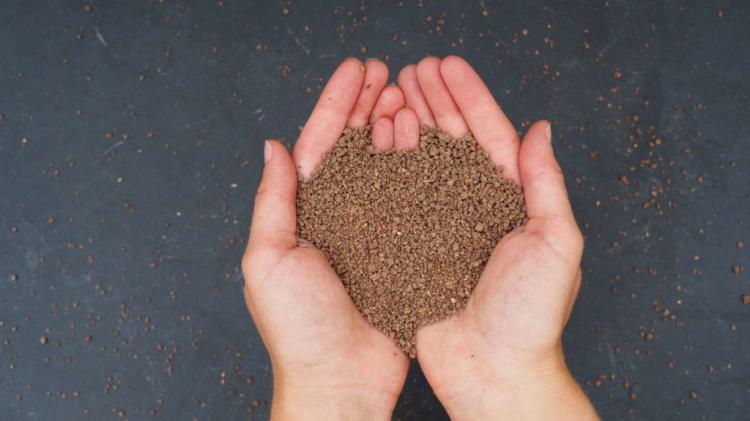
With organic fertilizer there is no risk of over-fertilization
Mineral lawn fertilizer
Advantages:
- Faster availability
- Lower price
- Higher nutrient content
Disadvantage:
- Over-fertilization with plant damage likely
- Possible environmental damage
- Soil impoverishment when used alone
- Without long-term effects
- Use every one to two months
Use: 3 – 6 times a year
In general, the following applies to the fertilization of lawns: In spring or early summer fertilization should be nitrogen-oriented, in autumn potassium-emphasized. Very quickly available nitrogen is only contained in mineral or organic-mineral fertilizers. So if you mainly want to fertilize organically, which we clearly recommend, you have to fertilize about two weeks earlier because of the somewhat slower implementation and keep the lawn slightly moist from this point on.
Summary: what to fertilize the lawn with after winter?
- Organic or mineral lawn fertilization is possible from spring to early summer.
- The strengths of organic fertilizers are above all the low expenditure, the high level of safety in use and the sustainable supply of the lawn.
- The strengths of mineral fertilizers are their quick action and low price – the major weaknesses are the risk of overfertilization, which can damage plants and the environment, and the more likely impoverishment of the soil.
- Compost or manure can be natural alternatives, but should be applied sparingly at first.
- For the first fertilization of the year, choose a nitrogenous fertilizer.
- We recommend using primarily organic long-term fertilizers for fertilization in spring, summer and autumn, such as our Plantura organic lawn fertilizer and Plantura organic autumn lawn fertilizer.
Scarify the lawn after winter
Spring is the best time to scarify. The months of April and May are ideal, provided that the weather is vigorous, i.e. damp and warm. It is particularly important that the lawn has enough time to regenerate and close the gaps that have arisen. If April and May are dry and cool, it makes sense to postpone the activity until late summer or early autumn. If you really want to improve your lawn sustainably, sanding, vigorous fertilization and reseeding are essential.
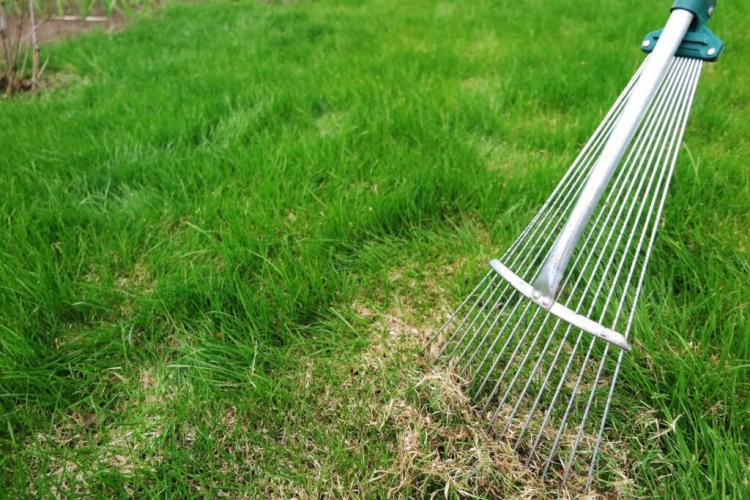
Combing out the lawn removes thatch and thus ensures better ventilation of the turf [Photo: photowind / Shutterstock.com]
Tip: scarifying against moss or felt?
Scarifying the lawn is intended to cut up matting and moss carpets above the sward or to reopen encrusted soil surfaces, so that the growth of the grass is encouraged. Used correctly it has a positive effect on the grass plants and a negative one on many undesirable wild herbs. Wild herbs that form runners such as couch grass, field horsetail or groundgrass can, however, be spread over a large area. Scarifying should only be used as an explicit regeneration measure at intervals of several years, but at least one year apart.
Scarifying alone does not help to permanently combat moss in the lawn. Large amounts of moss appear in the lawn when the conditions are poor for the lawn and good for the moss. Good conditions for moss exist on nutrient-poor, shady and moist areas and soils with a pH value well below 6 (i.e. acidic), which are compacted and therefore poorly ventilated. Creating optimal conditions for the lawn is the only way to permanently displace moss. We therefore advise against annual scarifying for the sole purpose of controlling moss.
Scarifying in 8 steps:
- Mow the lawn very briefly to a height of 1 to 3 cm and remove the clippings.
- Work the area lengthways and crossways with the scarifier. If you work manually, rake lengthways and crossways as well.
- Remove the excavated material after each drive over with the scarifier. For example, you can use it as a mulch material or compost it.
- If necessary, sand the area with around 2 to 3 liters of sand per square meter. Use fine sand (grain size 0/2) for this. If you want to ventilate your lawn after scarifying, proceed as described in the following paragraph.
- Spread the sand evenly with a rake or coarse broom.
- If there are large gaps, re-sow with the correct seed mixture, rake them in flat and press them down.
- Fertilize and water the lawn extensively. If you have reseeded, only fertilize half the amount indicated on the lawn fertilizer.
- Do not re-enter the lawn until the sward is closed and water daily in the meantime.
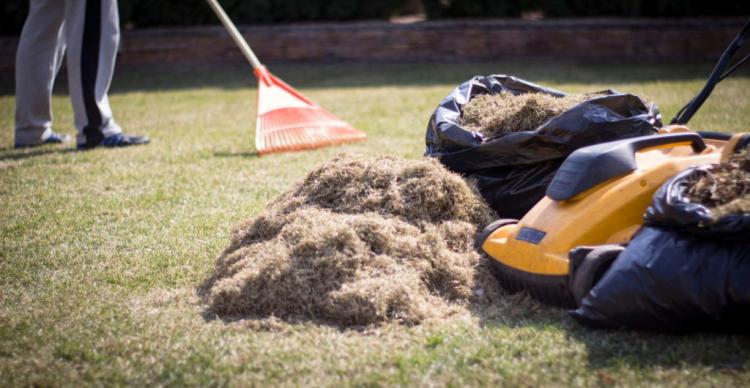
When scarifying or combing out, large amounts of moss and felt are often produced [Photo: mykhailo pavlenko / Shutterstock.com]
Aerate and sand the lawn after winter
Aerating the lawn removes superficial compaction and creates voids in the upper soil layer. Even without sanding, this leads to a better supply of oxygen, water and nutrients, because everything that falls or flows onto the lawn from above is more easily absorbed. Possible devices for this are nail rollers, shoes with nails or simple digging forks, as they are already in the shed of many garden owners. There are also motorized devices – with slitting knives or hollow tools (so-called “spoons”) that are attached to a rotating shaft and either slit or cut out entire cones of the earth. The latter of the two methods is more effective on very compacted soils. The resulting holes are about 10 cm deep.
After aerating, sanding can take place. In particular, cohesive, heavy soils experience improved ventilation and drainage through sanding. Well-drained soil has the ability to drain excess water into deeper soil layers so that waterlogging does not occur. This positive effect results from the relatively coarse grain size of the sand: the large grains of sand create soil pores from which water drains quickly so that they are instead filled with air. Shifting the soil composition in favor of the proportion of sand also makes the lawn more resistant to shear forces. That is why sanding is carried out especially on sports fields.
* in cooperation with Floragard
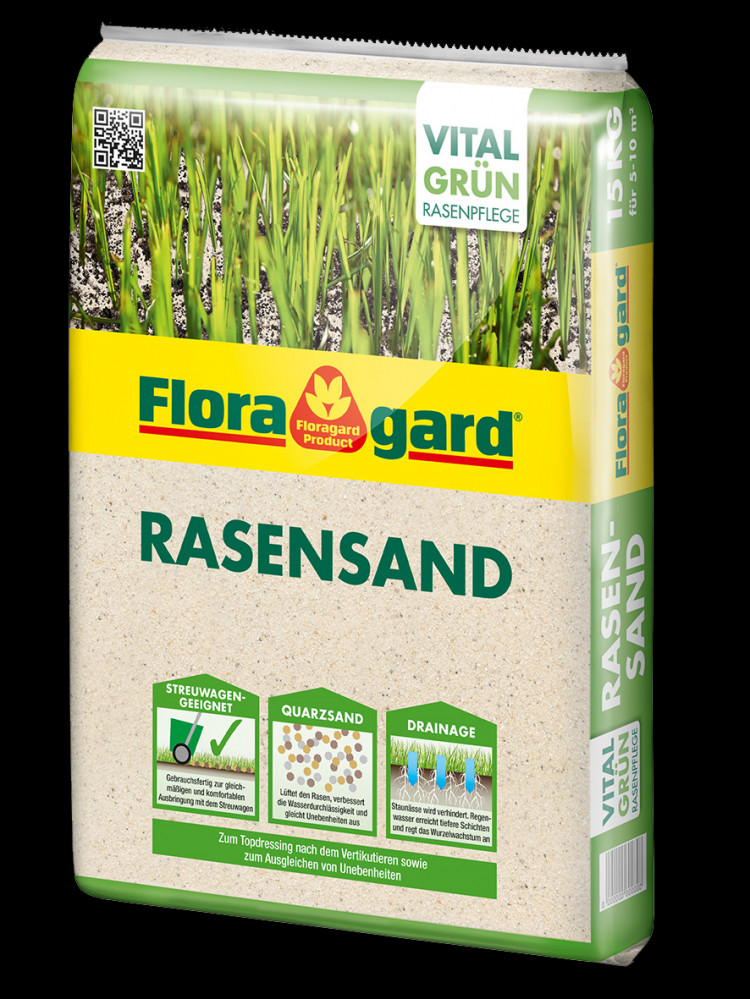
Due to the combination with the previous aeration, the sand penetrates into the cavities created and thus deeply into the soil structure. Accordingly, more sand is required than if sanding is carried out after scarifying. The sand used should have a grain size of 0/2, i.e. grain sizes between 0 and 2 mm. The use of washed sand is ideal, because it contains only the smallest fines, so that many large air pores can arise.

When working the lawn with hollow tools, these so-called “plugs” occur which have to be removed after aeration [Photo: IanRedding / Shutterstock.com]
Summary aeration and sanding of the soil:
- Mow and rake the lawn.
- Ventilate the area with a coring machine or one of the other methods listed above.
- Sand with 3 to 5 liters of sand per square meter. Aeration with a device with hollow tools consumes a lot of sand, the other methods less. If possible, washed sand with a grain size of 0/2 should be used.
- Spread the sand with a broom or (if available) a trawl and trickle into the holes.
- Then fertilize and water.
- The lawn should not be stepped on for the next three to four weeks.
Do you want to know which type of lawn is best for your garden? In our special article we present different lawn mixtures.
If you would like to receive continuous information on the subject of lawns, please register for our newsletter, the Plantura Garden Post. At the end of the article you can enter your email address directly.



